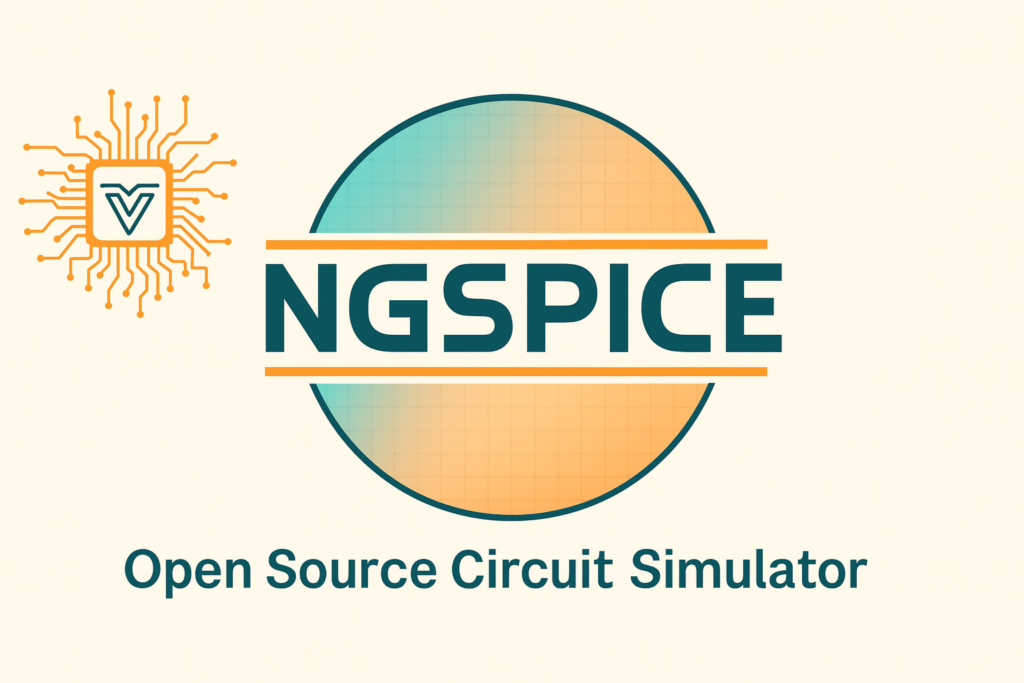
NGSpice: Free Open-Source Circuit Simulation Tool for Faster & Accurate Designs
Introduction
In the world of electronic design automation (EDA), circuit simulation is a crucial part of the design and validation process for both analog and digital circuits. With the growing complexity of integrated circuits and the increasing need for optimized designs, simulation tools play a critical role in evaluating the performance of circuits before fabrication. One such popular and completely free, open-source tool is NGSpice, a highly regarded SPICE-based circuit simulator. This review explores the features, benefits, limitations, and applications of NGSpice, highlighting why it has become a widely used tool in academia, research, and industry.
What is NGSpice?
NGSpice is an open-source SPICE (Simulation Program with Integrated Circuit Emphasis) simulator. It serves as a simulation engine for modeling the behavior of electronic circuits, particularly focusing on analog, mixed-mode, and digital circuits. SPICE is the de facto standard for circuit simulation, and NGSpice is a free, open-source implementation of this standard. Originally developed at the University of California, Berkeley, SPICE has evolved significantly over the years, and NGSpice is one of the most well-maintained and widely used versions of this software.
Key Features of NGSpice
- Comprehensive Circuit Simulation: Simulates analog, digital, and mixed-mode circuits with support for components like resistors, capacitors, inductors, transistors, diodes, and more.
- Simulation of Nonlinear Components: High-accuracy simulation for nonlinear devices such as transistors and diodes, essential for amplifiers, oscillators, and active circuits.
- Powerful Analysis Capabilities:
- DC Analysis – Find operating points under steady-state conditions.
- AC Analysis – Analyze frequency response for filter design, stability, and gain margins.
- Transient Analysis – Observe time-domain responses for timing and waveform analysis.
- Noise Analysis – Assess thermal noise for precision designs.
- Parametric Sweep – Evaluate the effect of varying parameters for optimization.
- Support for Mixed-Signal Circuits: Simulates both analog and digital components in a single environment.
- Extensive Model Support: Includes built-in models (BSIM, HSPICE) and supports custom/third-party models.
- Scripting and Customization: Command-line control for automation and integration with other tools.
- Open-Source and Extensibility: Freely available, modifiable, and supported by an active community.
Benefits of Using NGSpice
- Cost-Effective: 100% free with no licensing fees.
- Cross-Platform Compatibility: Works on Windows, Linux, and macOS.
- Open-Source Flexibility: Users can inspect, modify, and contribute to the code.
- Integration with Other Tools: Works with KiCad, LTspice, and Geda for schematic capture and PCB design.
- Educational Use: Ideal for teaching and learning circuit simulation.
Limitations of NGSpice
- User Interface: Lacks a built-in GUI; relies on command-line or third-party front-ends like Qucs.
- Learning Curve: Requires familiarity with SPICE syntax, making it challenging for beginners.
- Limited 3D Capabilities: No built-in 3D PCB visualization; external tools are needed.
- Limited High-Level System Design Support: Not ideal for complex multi-domain or RF system-level design.
Applications of NGSpice
- Analog Circuit Design: Amplifiers, filters, oscillators, and more.
- Digital Circuit Simulation: Logic gates, flip-flops, and mixed-signal systems.
- RF Circuit Design: Mixers, modulators, and RF power amplifiers.
- Educational Purposes: Teaching circuit design principles and simulation techniques.
- Research and Development: Testing and optimizing prototype designs.
Conclusion
NGSpice is a robust, powerful, and completely free tool for anyone working in analog, mixed-signal, or digital circuit design. Its open-source nature, coupled with its comprehensive range of features, makes it an attractive choice for professionals, researchers, and hobbyists alike. Despite its learning curve and lack of a GUI, NGSpice remains one of the best SPICE simulators available for those looking for a free and versatile solution.
For users with advanced needs, NGSpice can be integrated with other tools to create a complete EDA solution, making it valuable for both academic and professional environments. With continuous development and a strong user community, NGSpice will remain a key player in circuit simulation for years to come.


